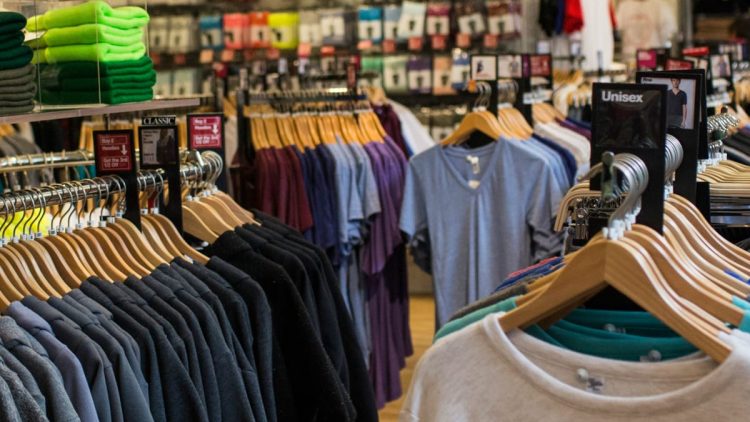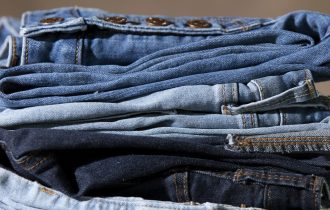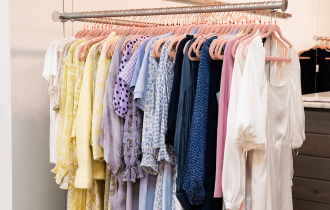Sustainable Fashion: Making a Difference in Apparel
In recent years, the apparel industry has witnessed a significant shift towards sustainable fashion practices. As consumers become more conscious of the environmental and social impact of their choices, the demand for eco-friendly and ethical clothing has grown exponentially. In this article, we will explore the concept of sustainable fashion, its importance, and the various ways in which it is making a positive difference in the world of apparel.
The Need for Sustainable Fashion
The conventional fashion industry has long been associated with negative environmental and social consequences. Fast fashion, characterized by rapid production and consumption of cheap clothing, has led to excessive waste, overconsumption of resources, and exploitative labor practices. Additionally, the use of toxic chemicals and non-biodegradable materials in clothing production has contributed to environmental pollution and degradation.
Sustainable fashion aims to address these issues by promoting responsible practices that consider the well-being of the planet and its inhabitants. It seeks to create a circular and regenerative system where clothing is designed, produced, and consumed in a way that minimizes harm to the environment and respects the rights of workers throughout the supply chain.
Ethical Sourcing and Fair Labor Practices
One of the pillars of sustainable fashion is ethical sourcing and fair labor practices. This involves ensuring that the workers involved in the production of clothing are treated with dignity and receive fair wages. Sustainable fashion brands often prioritize transparency in their supply chains, allowing consumers to trace the origins of their garments and understand the conditions under which they were made.
By supporting brands that prioritize fair labor practices, consumers can contribute to the improvement of working conditions and the empowerment of garment workers, many of whom are women in developing countries.
Eco-friendly Materials and Innovative Fibers
Another key aspect of sustainable fashion is the use of eco-friendly materials and innovative fibers. Traditional textiles like cotton and polyester have significant environmental impacts due to water consumption, chemical use, and energy-intensive production processes.
Sustainable fashion brands are exploring alternatives such as organic cotton, hemp, and bamboo, which require fewer pesticides and water. Additionally, they are turning to recycled materials like rPET (recycled polyester) and regenerated fibers like Tencel and Econyl, made from discarded plastics and fishing nets, to reduce the demand for virgin resources.
Circular Fashion and the Rise of Second-hand Clothing
Circular fashion is an essential concept in sustainable fashion, aiming to extend the lifecycle of clothing and reduce waste. Brands and consumers alike are embracing the idea of circularity through various means.
Firstly, brands are incorporating circular design principles, creating durable and timeless pieces that can withstand multiple seasons and fashion trends. Additionally, some brands offer repair and take-back programs, encouraging consumers to repair or return old clothing to be recycled or upcycled.
Second-hand clothing has also gained popularity, with thrift stores, online marketplaces, and clothing rental services offering more sustainable options for consumers. By choosing second-hand clothing, consumers can reduce their carbon footprint and give pre-loved garments a new lease of life.
Slow Fashion and Conscious Consumption
In contrast to fast fashion’s rapid turnover of styles, slow fashion promotes mindful and conscious consumption. It encourages consumers to buy fewer, higher-quality pieces that align with their personal style and values. By investing in timeless and durable clothing, consumers can reduce their overall fashion waste and support brands that prioritize ethical and sustainable practices.
Moreover, slow fashion encourages a deeper appreciation for the craftsmanship and artistry behind clothing, fostering a sense of connection to the garments we wear and the people who made them.
The Power of Consumer Choices
Ultimately, sustainable fashion’s success hinges on consumer choices. As more individuals prioritize eco-friendly and ethical considerations in their fashion purchases, the demand for sustainable products continues to grow.
By supporting sustainable fashion brands, consumers can send a powerful message to the fashion industry that ethical and environmentally responsible practices are essential. This, in turn, puts pressure on traditional fashion brands to reevaluate their practices and embrace sustainability.
Sustainable fashion represents a transformative shift in the apparel industry, addressing the environmental and social challenges that have plagued the conventional fashion model. Through ethical sourcing, eco-friendly materials, circular fashion, and conscious consumption, sustainable fashion is making a significant difference in the world of apparel.
By choosing sustainable fashion, consumers can contribute to positive change, promoting a more responsible and regenerative fashion ecosystem. As this movement continues to gain momentum, the fashion industry’s future holds the promise of a more sustainable, equitable, and compassionate world for both people and the planet











